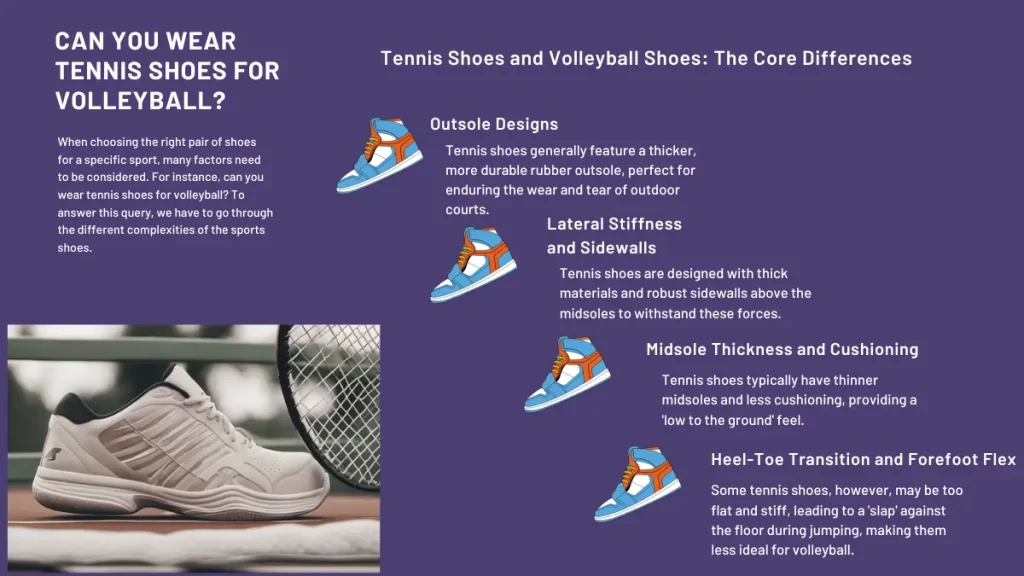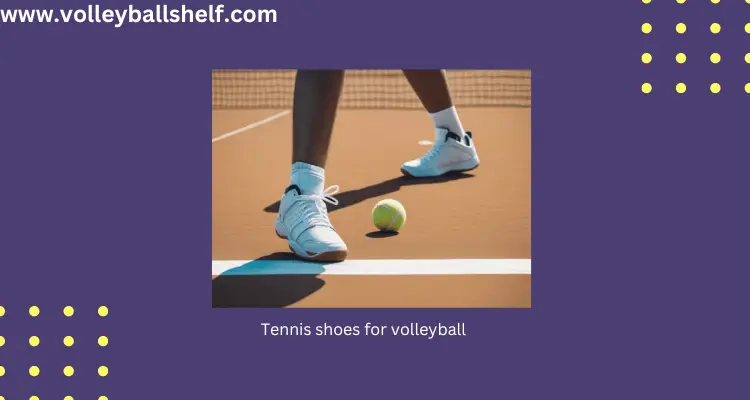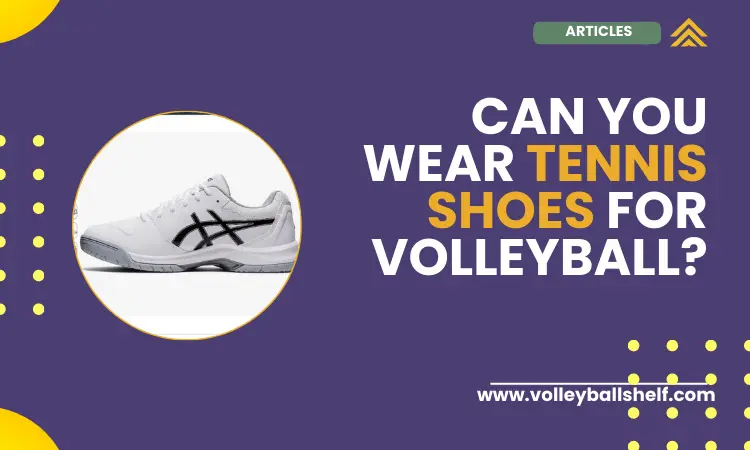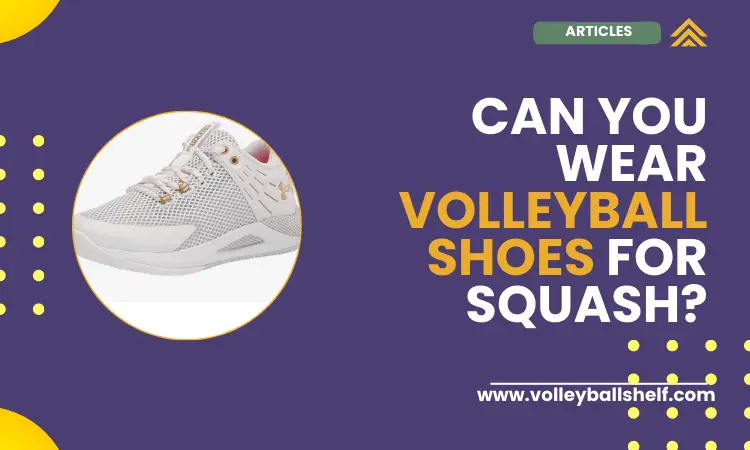Introduction
When choosing the right pair of shoes for a specific sport, many factors need to be considered. For instance, can you wear tennis shoes for volleyball? To answer this query, we have to go through the different complexities of the sports shoes. Then we will reach at the right position.
As we know that every element put significant impact on the volleyball game. Wearing right pair of shoes is one of the most important factor for your performance at the court. This isn’t merely about making a fashion statement; it’s about how your shoes contribute to gameplay, comfort, and injury prevention.
Quick Response:
Every game has its specific gear, designed specifically for that sport. This principle applies to tennis and volleyball alike. It is not recommended to wear tennis shoes for volleyball because the soles in tennis shoes, while comfortable and providing excellent grip, are not designed for the quick movements typical of volleyball. Volleyball shoes, conversely, are made for fast traction and rapid movement.
Tennis Shoes and Volleyball Shoes: The Core Differences
Everything is made for the specific reasons. In the same way tennis shoes and volleyball shoes are also designed for its own specific game. So don’t reach out the results too early. These shoes are designed for distinctly different sports that involve unique movements and playing environments.
Basketball shoes comparatively tennis shoes have highest chances of similarity with the volleyball shoes. But as an expert it’s highly not recommended to wear instead of actual game shoes. Because of its low quick movement’s feature. Similarly, tennis shoes have unique features that might make them less ideal for a volleyball court.
1: Outsole Designs: More than Just the Shoe’s Bottom
A significant contrast lies in the design of their outsoles. Tennis shoes generally feature a thicker, more durable rubber outsole, perfect for enduring the wear and tear of outdoor courts. Tennis shoes also use different traction patterns suitable for the rougher and often slippery surfaces of tennis courts.
In contrast, volleyball shoes are crafted with soft gum rubber outsoles designed to provide maximum grip on indoor, hardwood court surfaces. These shoes’ soles are often smoother and flatter to offer uniform traction, reducing the risk of injuries due to sudden slips or falls.
Volleyball shoes are explicitly designed to provide the necessary support, cushioning, and grip for volleyball players, making them the most suitable choice for the sport. Asics volleyball shoes, known for their high-quality materials and excellent performance, are popular among volleyball players. This brand provides everything that a player looks for in a shoe.
2: Lateral Stiffness and Sidewalls: Understanding the Support Structure
Tennis, being a high-intensity game, involves aggressive changes in direction, putting lateral pressure on the shoes. Tennis shoes are designed with thick materials and robust sidewalls above the midsoles to withstand these forces. This provides superior lateral stiffness and containment, essential for rapid side-to-side movements during a tennis match.
In contrast, volleyball shoes offer a softer approach to lateral containment. With internal sidewalls, they allow for slight swelling of the foot over the sole during lateral movements – a unique aspect of volleyball, given its specific style of play.
3: Midsole Thickness and Cushioning: More than Just Comfort
The thickness of the midsole and the level of cushioning can significantly impact an athlete’s performance and comfort. Tennis shoes typically have thinner midsoles and less cushioning, providing a ‘low to the ground’ feel. This design is ideal for tennis, where jumping is less common, and the focus is more on quick, grounded movements.
However, volleyball involves a significant amount of jumping and landing, demanding superior cushioning for shock absorption. Volleyball shoes, with their thicker midsoles and better cushioning, provide this comfort. For instance, Asics court shoes offer excellent cushioning and support, making them suitable for volleyball’s high-impact nature.
4: Heel-Toe Transition and Forefoot Flex: The Unsung Essentials
The heel-toe transition refers to the shoe’s ability to smoothly rock from heel to toe—an important factor for athletes engaged in sports that involve a lot of running and jumping. Volleyball shoes, with their smooth heel-toe transition and ample forefoot flex, are ideally designed to cater to volleyball players who spend a large chunk of their game time in the air. Some tennis shoes, however, may be too flat and stiff, leading to a ‘slap’ against the floor during jumping, making them less ideal for volleyball.

Making a Judgment: Are Tennis Shoes Suited for Volleyball?
Despite some shared attributes, the key differences outlined above make it clear that tennis shoes aren’t the ideal footwear for volleyball. From their lack of necessary cushioning and hardwood court grip to their unsuitability for frequent jumping and landing, tennis shoes fall short of volleyball’s unique requirements. It’s generally recommended to opt for dedicated volleyball shoes for superior performance, as shared by experienced players in a Reddit discussion about tennis shoes for volleyball.
The Reverse Scenario: Are Volleyball Shoes Suitable for Tennis?
Imagine turning the tables: would volleyball shoes be a good fit on the tennis court? Given their lack of traction, lateral containment, and durability, volleyball shoes are not suitable for concrete or clay tennis courts. You could risk rolling an ankle due to the soft materials and higher ground clearance, and changing directions could be more challenging, potentially hampering your performance.

The Exception to the Rule: The Best Tennis Shoes for Volleyball
However, if one were to bend the rules and choose a tennis shoe for a volleyball game, the Asics Gel-Dedicate 7 could be a viable contender. Its traction pattern and heel-toe transition mirror those of volleyball shoes. However, as a budget shoe, it might lack the necessary cushioning and durability, making it less ideal for volleyball. But for beginner libero’s and setters, whose roles involve less jumping and more groundwork, it might be an acceptable choice.
Additional Considerations: Special Features and Choices
Brands like Nike offer a range of volleyball shoes known for their innovative features and stylish designs, catering to both amateur and professional players. They typically come with enhanced traction, cushioning, and stability—key factors to consider when looking for the best volleyball shoes.
Moreover, it’s noteworthy that volleyball shoes for women are specially designed to fit the anatomical structure and needs of female players, ensuring comfort and support during intense gameplay. These shoes often have a narrower fit, higher arch support, and lighter weight, acknowledging the physiological differences between male and female athletes.
In Conclusion: Can You Wear Tennis Shoes for Volleyball?
Understanding the main differences between tennis shoes and volleyball shoes can make a significant difference in your performance and on-court experience. Each sport demands specific shoe designs and characteristics, ensuring the athlete’s safety, comfort, and improved performance. It’s crucial to consider factors like fit, cushioning, traction, and stability to find the perfect pair that suits your playing style and preferences. So while tennis shoes might survive just fine on a volleyball court, they’re far from being the ideal choice.
Investing in the right pair of shoes could be the defining factor between a sprained ankle and landing that game-winning spike, so choose wisely!



![When to get new volleyball shoes? [3 key signs]](https://volleyballshelf.com/wp-content/uploads/2023/09/When-to-get-new-volleyball-shoes.webp)
![Can Volleyball Shoes Be Used for Netball? [3 key reasons]](https://volleyballshelf.com/wp-content/uploads/2023/09/Can-Volleyball-Shoes-Be-Used-for-Netball.webp)

![How to make your volleyball shoes grip better? [3 Tips]](https://volleyballshelf.com/wp-content/uploads/2023/08/how-to-make-your-volleyball-shoes-grip-better.webp)
![What Should You Wear if You Don’t Have Volleyball Shoes? [3 Best Alternatives]](https://volleyballshelf.com/wp-content/uploads/2023/09/What-Should-You-Wear-if-You-Dont-Have-Volleyball-Shoes.webp)
![Are volleyball shoes good for lifting? [3 Pros & Cons]](https://volleyballshelf.com/wp-content/uploads/2023/09/Are-volleyball-shoes-good-for-lifting-1.webp)